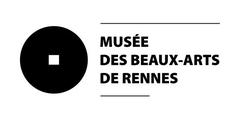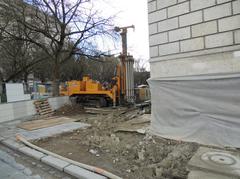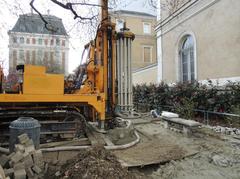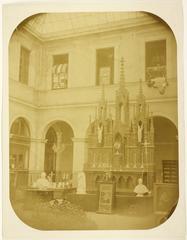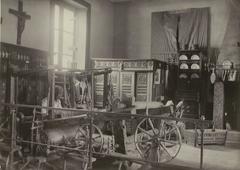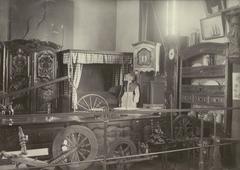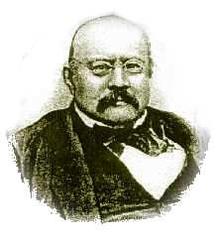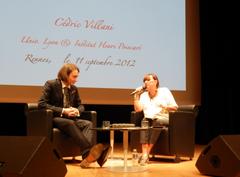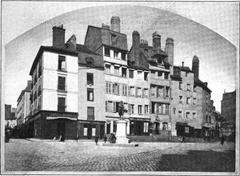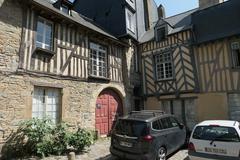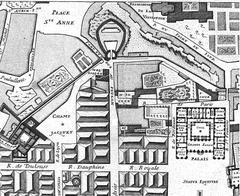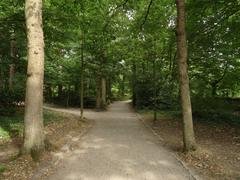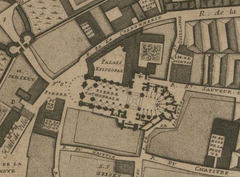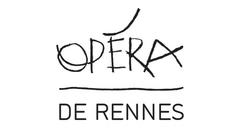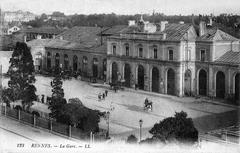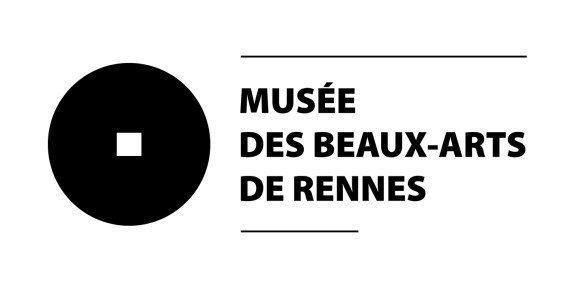
Visiting Hours and Tickets for Musée des Beaux-Arts de Rennes
Date: 19/07/2024
Introduction
The Musée des Beaux-Arts de Rennes, located in the heart of Rennes, France, is a cultural institution that has captivated art enthusiasts for centuries. Established in 1794 during the French Revolution, the museum was initially created to safeguard and exhibit artworks confiscated from religious institutions and émigrés (Musée des Beaux-Arts de Rennes). Since its inception, the museum has undergone significant transformations, both in its architectural design and its collection, making it a repository of diverse artistic heritage.
The museum is housed in the historic Palais Universitaire, a 19th-century architectural marvel designed by Jean-Baptiste Martenot. This neoclassical building provides a fitting backdrop for the museum’s extensive collection, which spans from ancient artifacts to contemporary masterpieces (Visitor Guide of Musée des Beaux-Arts de Rennes). Notable works by artists such as Georges de La Tour, Paul Gauguin, and Pablo Picasso are among the museum’s highlights, attracting visitors from around the world.
In addition to its permanent collection, the Musée des Beaux-Arts de Rennes hosts dynamic special exhibitions and events, offering a rich and varied cultural experience. The museum’s commitment to accessibility and education is evident in its range of programs, guided tours, and workshops, designed to engage visitors of all ages and backgrounds (Visitor Tips for Musée des Beaux-Arts de Rennes).
This comprehensive guide aims to provide detailed visitor information, including ticket prices, opening hours, and travel tips, ensuring that your visit to the Musée des Beaux-Arts de Rennes is both enjoyable and enriching.
Table of Contents
- Introduction
- Discover the Rich History and Visitor Guide of Musée des Beaux-Arts de Rennes
- Notable Collections and Exhibitions
- Special Exhibitions and Events
- Visitor Information
- Nearby Attractions
- Educational and Cultural Impact
- Recent Developments and Future Directions
- Frequently Asked Questions
- Conclusion
Discover the Rich History and Visitor Guide of Musée des Beaux-Arts de Rennes
Founding and Early Years
The Musée des Beaux-Arts de Rennes was established in 1794 during the French Revolution. The museum’s creation was part of a broader initiative to preserve and display artworks confiscated from religious institutions and émigrés. The initial collection was assembled from the holdings of the Benedictine Abbey of Saint-Melaine and the Cathedral of Saint-Pierre, among other sources. This period marked the beginning of the museum’s mission to democratize access to art and culture.
19th Century Developments
Throughout the 19th century, the museum’s collection expanded significantly. In 1801, the museum received a substantial donation from Christophe-Paul de Robien, a local aristocrat and art collector. His collection included a wide array of paintings, sculptures, and artifacts, which formed the core of the museum’s holdings. The museum’s collection continued to grow through acquisitions and donations, reflecting the evolving tastes and artistic movements of the time.
Architectural Evolution
The museum’s physical space has undergone several transformations since its inception. Initially housed in the former University of Rennes building, the museum moved to its current location in the Palais Universitaire in 1841. The Palais Universitaire, designed by architect Jean-Baptiste Martenot, was originally intended as a university building but was repurposed to accommodate the growing art collection. The building itself is a fine example of 19th-century architecture, featuring neoclassical elements and spacious galleries.
20th Century Expansion
The 20th century brought further expansion and modernization to the Musée des Beaux-Arts de Rennes. In the 1950s, the museum underwent significant renovations to improve its facilities and accommodate a growing collection. These renovations included the addition of new galleries and the modernization of existing spaces. The museum also began to focus more on contemporary art, acquiring works by modern artists and organizing exhibitions that reflected current artistic trends.
Notable Collections and Exhibitions
The Musée des Beaux-Arts de Rennes is renowned for its diverse and extensive collection, which spans several centuries and includes works from various artistic movements. The museum’s holdings include masterpieces by renowned artists such as Georges de La Tour, Paul Gauguin, and Pablo Picasso. One of the museum’s most notable pieces is “The Newborn” by Georges de La Tour, a striking example of 17th-century French painting.
In addition to its permanent collection, the museum hosts temporary exhibitions that showcase a wide range of artistic styles and periods. These exhibitions often feature works from other museums and private collections, providing visitors with a unique opportunity to experience art from different cultures and eras.
Visitor Information
Visiting Hours and Tickets
The Musée des Beaux-Arts de Rennes is open from Tuesday to Sunday, 10 AM to 6 PM. Tickets can be purchased at the entrance or online through the official website. Prices range from €8 for adults to free entry for children under 18.
How to Get There
Located in the heart of Rennes, the museum is easily accessible by public transport. The nearest metro station is République.
Nearby Attractions
After visiting the museum, explore the nearby historical sites such as the Rennes Cathedral and the Thabor Park.
Educational and Cultural Impact
The Musée des Beaux-Arts de Rennes plays a vital role in the cultural and educational life of Rennes and the surrounding region. The museum offers a variety of educational programs and activities designed to engage visitors of all ages. These programs include guided tours, workshops, and lectures that provide deeper insights into the museum’s collection and the broader context of art history.
The museum also collaborates with local schools and universities to promote art education and foster a greater appreciation for the visual arts. Through these initiatives, the Musée des Beaux-Arts de Rennes contributes to the cultural enrichment of the community and helps to cultivate the next generation of art enthusiasts.
Recent Developments and Future Directions
In recent years, the Musée des Beaux-Arts de Rennes has continued to evolve and adapt to the changing landscape of the art world. The museum has embraced digital technology, offering virtual tours and online exhibitions that make its collection accessible to a global audience. These digital initiatives have been particularly important in the context of the COVID-19 pandemic, allowing the museum to reach new audiences and maintain its engagement with the public.
Looking to the future, the Musée des Beaux-Arts de Rennes aims to continue expanding its collection and enhancing its facilities. The museum is committed to preserving its rich heritage while also embracing contemporary art and new forms of artistic expression. Through ongoing acquisitions, exhibitions, and educational programs, the museum seeks to remain a dynamic and vibrant cultural institution.
Frequently Asked Questions
What are the opening hours of the Musée des Beaux-Arts de Rennes?
The museum is open from Tuesday to Sunday, 10 AM to 6 PM.
How much are the tickets?
Ticket prices range from €8 for adults, with free entry for children under 18.
Conclusion
The Musée des Beaux-Arts de Rennes is a must-visit for art enthusiasts and history buffs alike. Plan your visit today and immerse yourself in centuries of artistic excellence. For more information, follow us on social media or download our app Audiala for the latest updates and exclusive content.
For more information, you can visit the official website of the Musée des Beaux-Arts de Rennes.
References
- Discover the Rich History and Visitor Guide of Musée des Beaux-Arts de Rennes, 2024, Musée des Beaux-Arts de Rennes
- Visiting Musée des Beaux-Arts de Rennes - History, Highlights, and Visitor Information, 2024, Musée des Beaux-Arts de Rennes
- Visitor Tips for Musée des Beaux-Arts de Rennes - Hours, Tickets, and More, 2024, Musée des Beaux-Arts de Rennes
